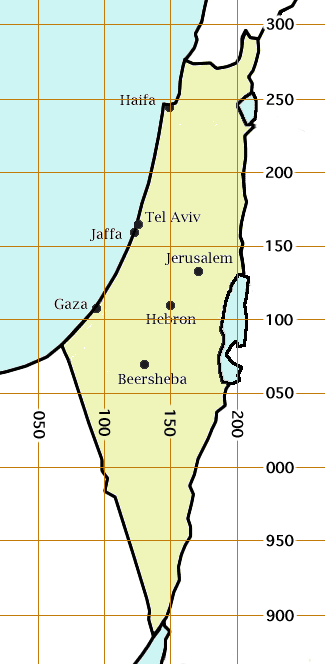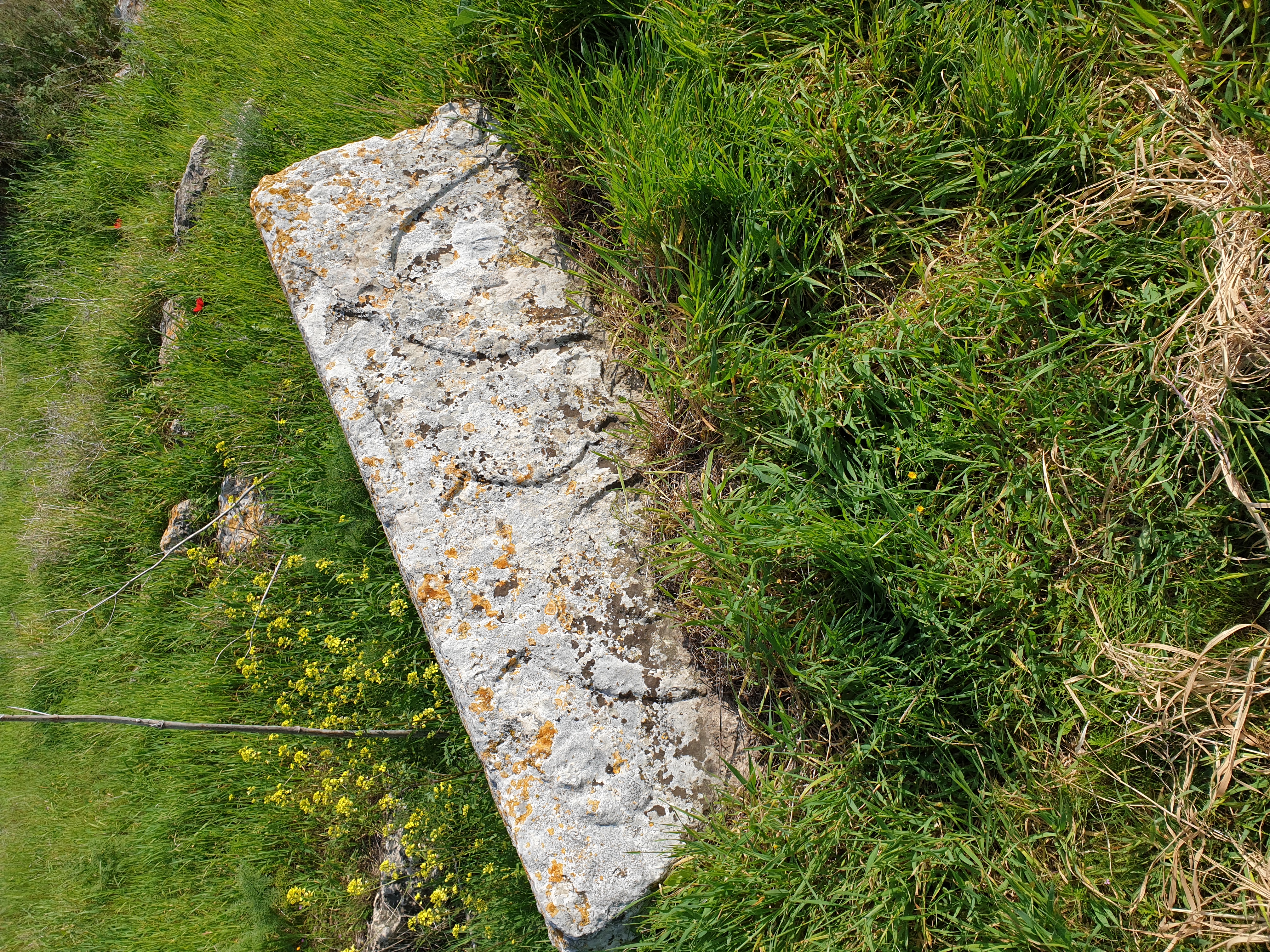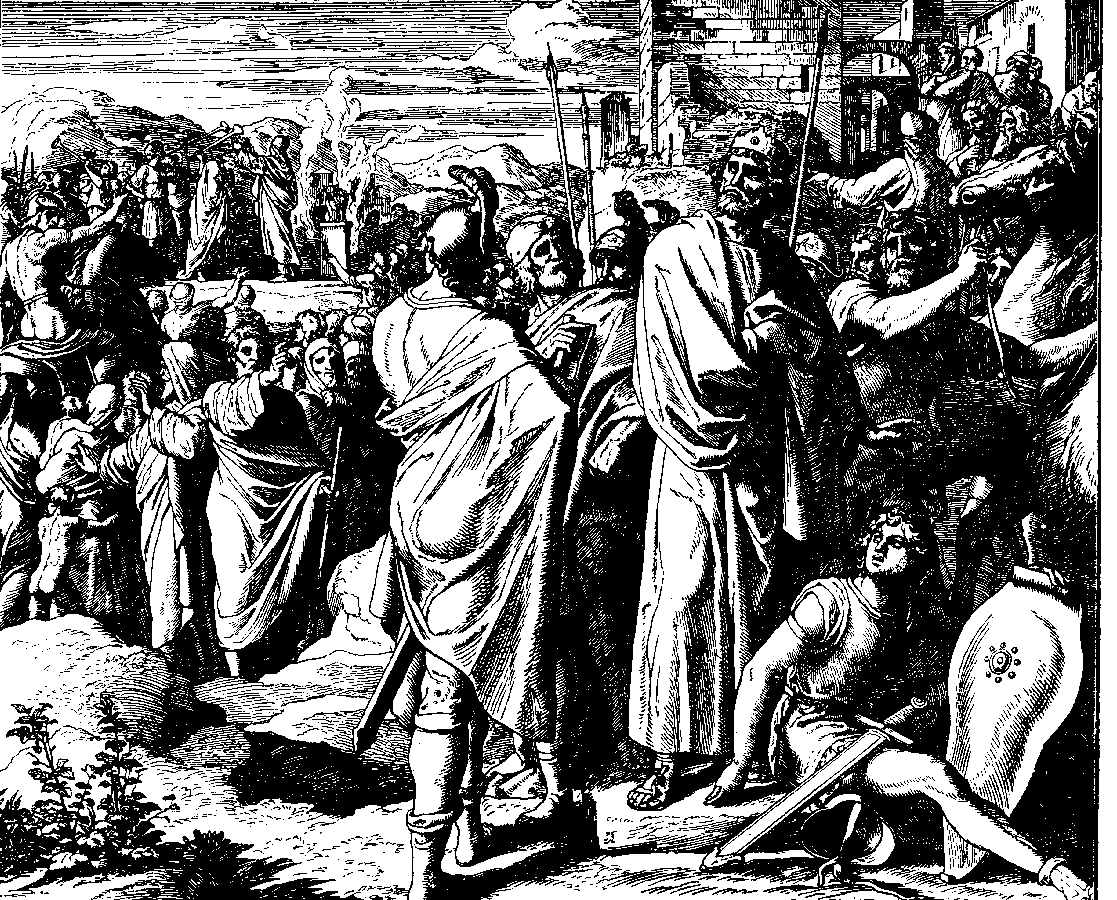|
Chezib Of Judah
Chezib, also known as Achzib of Judah (), is a biblical place-name associated with the birth of Judah (son of Jacob), Judah's son, Shelah (son of Judah), Shelah (Genesis 38:5), corresponding to the ''Achzib'' of the Book of Joshua (15:44), a town located in the low-lying hills of the plain of Judah, known as the Shefela. In ''I Chronicles 4:22'', the town is rendered as ''Chozeba''. The place is now a ruin. Identification Historical geographers are divided as to the location of Chezib in Judea. While some identify the site as ''Khirbet a-Sheikh Ghazi'',Notley, R.S. & Ze'ev Safrai, Safrai, Z. (2005), p. 161 (§945), note 945 others say that it is to be recognised in the nearby site of ''Khirbet ʿĒn el-Kizbe'' (grid position 149/122 Palestine grid, PAL). In both cases, the old namesake is preserved in the name of a nearby spring ''ʻAin el-Kezbeh'' (''ʿĒn el-Kizbe''), a place in the Elah Valley near Aviezer, Moshav Aviezer, directly south of Bayt Nattif. According to Israel Ant ... [...More Info...] [...Related Items...] OR: [Wikipedia] [Google] [Baidu] |
Palestine Grid
The Palestine grid was the geographic coordinate system used by the Survey Department of Palestine. The system was chosen by the Survey Department of the Government of Palestine in 1922. The projection used was the Cassini projection, Cassini-Soldner projection. The central Meridian (geography), meridian (the line of longitude along which there is no local distortion) was chosen as that passing through a marker on the hill of Mar Elias Monastery south of Jerusalem. The false origin (zero point) of the grid was placed 100 km to the south and west of the Ali el-Muntar hill that overlooks Gaza City, Gaza city. The unit length for the grid was the kilometre; the British units were not even considered. At the time the grid was established, there was no intention of mapping the lower reaches of the Negev Desert, but this did not remain true. Those southern regions having a negative Easting and northing, northing coordinate then became a source of confusion, which was solved by ad ... [...More Info...] [...Related Items...] OR: [Wikipedia] [Google] [Baidu] |
Tel Lavnin
Lavnin (''Hurvat Libnah'' / ''Tel Lavnin'' / ''Kh. Tell el-Beida'')()(), is a late Bronze Age archaeological site situated in Israel's Adullam region, rising some above sea level. The site lies northwest of Beit Gubrin, and about 1 kilometer west-north-west of Khirbat Umm Burj, directly south of Nehusha. In April 2019, the Jerusalem District Planning and Building Committee announced that the site would be incorporated into a new national park in the Judean Shephelah, called the "Lavnin Ridge Nature Reserve and National Park," an area to span over 1,000 dunams (250 acres) within the Mateh Yehuda Regional Council. Etymology and identification The name ''Lavnin'' is a reflection of popular etymology, the modern Hebrew name being a translation of the Arabic word ''Beida'', meaning "white." Others say that its modern name represents "the hill of bricks," hence: Tell Livnin (''livanim''), based on a different pronunciation of the Hebrew that is typically written without vowels.No ... [...More Info...] [...Related Items...] OR: [Wikipedia] [Google] [Baidu] |
I Chronicles
The Book of Chronicles ( , "words of the days") is a book in the Hebrew Bible, found as two books (1–2 Chronicles) in the Christian Old Testament. Chronicles is the final book of the Hebrew Bible, concluding the third section of the Jewish Tanakh, the Ketuvim ("Writings"). It contains a genealogy starting with Adam and a history of ancient Judah and Israel up to the Edict of Cyrus in 539 BC. The book was translated into Greek and divided into two books in the Septuagint in the mid-3rd century BC. In Christian contexts Chronicles is referred to in the plural as the Books of Chronicles, after the Latin name given to the text by Jerome, but is also referred to by its Greek name as the Books of Paralipomenon. In Christian Bibles, they usually follow the two Books of Kings and precede Ezra–Nehemiah, the last history-oriented book of the Protestant Old Testament. Summary The Chronicles narrative begins with Adam, Seth and Enosh, and the story is then carried forward, almos ... [...More Info...] [...Related Items...] OR: [Wikipedia] [Google] [Baidu] |
Genesis Rabba
Genesis Rabbah (, also known as Bereshit Rabbah and abbreviated as GenR) is a religious text from Judaism's classical period, probably written between 300 and 500 CE with some later additions. It is an expository midrash comprising a collection of ancient rabbinical homiletical interpretations of the Book of Genesis, the first book of the Torah, whose authorship in tradition has been attributed to Hoshaiah Rabbah in the period of the Amoraim, flourishing in 3rd century Roman-ruled Syria Palaestina. The midrash forms an aggadic commentary on Genesis, in keeping with the midrashic exegesis of that age. In a continuous sequence, broken only toward the end, the Biblical text is expounded, verse for verse, often word for word. Only genealogic passages and passages that furnish no material for exposition (as the reiterated account of Abraham's servant in 24:35-48) are omitted. Name The name ''Genesis'' or ''Bereshit Rabbah'' for the text is attested in the ''Halakhot Genesis'', ... [...More Info...] [...Related Items...] OR: [Wikipedia] [Google] [Baidu] |
Targum Pseudo-Jonathan
Targum Pseudo-Jonathan (also known as the Jerusalem Targum, Targum Yerushalmi, or Targum Jonathan) is an Aramaic translation and interpretation (targum) of the Torah (Pentateuch) traditionally thought to have originated from the land of Israel, although more recently a provenance in 12th-century Italy has been proposed. As a ''targum'', it is not just a translation but incorporates aggadic material collected from various sources as late as the Midrash Rabbah as well as earlier material from the Talmud. So it is a combination of a commentary and a translation. It is also a composite text, involving the Old Palestinian Targum, Targum Onkelos, and a diverse array of other material. Name The original name of Targum Pseudo-Jonathan was Targum Yerushalmi (Jerusalem Targum). However, due to an error in the fourteenth century, it came to be known as the Targum "Jonathan" instead of "Jerusalem" in reference to Jonathan ben Uzziel. Due to the pseudonymous nature of this attribution, it ... [...More Info...] [...Related Items...] OR: [Wikipedia] [Google] [Baidu] |
Aramaic Targum
A targum (, ''interpretation'', ''translation'', ''version''; plural: targumim) was an originally spoken translation of the Hebrew Bible (also called the ) that a professional translator ( ''mǝṯurgǝmān'') would give in the common language of the listeners when that was not Biblical Hebrew. This had become necessary near the end of the first century BCE, as the common language was Aramaic and Hebrew was used for little more than schooling and worship. The translator frequently expanded his translation with paraphrases, explanations and examples, so it became a kind of sermon. Writing down the targum was initially prohibited; nevertheless, some targumitic writings appeared as early as the middle of the first century. They were not recognized as authoritative by the religious leaders. Some subsequent Jewish traditions, beginning with the Jews of Lower Mesopotamia, accepted the written targumim as authoritative translations of the Hebrew scriptures into Aramaic. Today, the com ... [...More Info...] [...Related Items...] OR: [Wikipedia] [Google] [Baidu] |
T K Cheyne
Thomas Kelly Cheyne, (18 September 18411915) was an English divine and biblical critic. Biography He was born in London and educated at Merchant Taylors' School, London, and Oxford University. Subsequently, he studied German theological methods at Göttingen. He was ordained in 1864 and held a fellowship at Balliol College, Oxford, from 1868 to 1882. During the earlier part of this period he stood alone in the university as a teacher of the main conclusions of Old Testament criticism at that time. In 1881 he was presented to the rectory of Tendring, in Essex, and in 1884 he was made a member of the Old Testament revision company. He resigned the living of Tendring in 1885 on his appointment to be Oriel Professor of the Interpretation of Holy Scripture, which carried with it a canonry at Rochester. In 1889 he delivered the Bampton lectures at Oxford. In 1908 he resigned his professorship. In June 1901, he received an honorary doctorate of Divinity from the University of Glas ... [...More Info...] [...Related Items...] OR: [Wikipedia] [Google] [Baidu] |
Mareshah
Maresha was an Iron Age city mentioned in the Hebrew Bible, whose remains have been excavated at Tell Sandahanna (Arabic name), an archaeological mound or 'tell' renamed after its identification to Tel Maresha (). The ancient Judahite city became Idumaean after the fall of Judah in 586 BCE, and after Alexander's conquest of the region in 332 BCE became Hellenised under the name Marisa or Marissa. The tell is situated in Israel's Shephelah region, i.e. in the foothills of the Judaean Mountains, about south of Beit Gubrin. Excavations revealed that Maresha was inhabited (not necessarily continuously) during the Iron Age, the Persian period, and the Hellenistic period. The Hasmonean ruler John Hyrcanus seized Maresha in 113/112 BCE, leading to its decline and eventual desertion. The city faced its ultimate destruction at the hands of the Parthians in 40 BCE. Maresha was first excavated in 1898–1900 by the British archaeologists Bliss and Macalister on behalf of the Pa ... [...More Info...] [...Related Items...] OR: [Wikipedia] [Google] [Baidu] |
Shefelah
The Shephelah () or Shfela (), or the Judaean Foothills (), is a transitional region of soft-sloping rolling hills in south-central Israel stretching over between the Judaean Mountains and the Coastal Plain. The different use of the term "Judean Plain", as either defining just the Coastal Plain segment stretching along the Judaean Mountains, or also including, or only referring to, the Shfela, often creates grave confusion. Today the Shfela is largely rural with many farms, but the cities of Ashdod, Ashkelon, Rehovot, Beit Shemesh, and Kiryat Gat roughly surround it. The Bible assigned land in the Shfela to the tribes of Judah and Dan. Biblical references The Shfela is mentioned many times in the Hebrew Bible. In the King James Version, its name tends to be translated as 'vale' or 'valley'. The Shfela was the site of many biblical battles. During the Bar Kokhba revolt, hollowed out hills were connected to form elaborate bunker systems for the combat with the Romans. Geo ... [...More Info...] [...Related Items...] OR: [Wikipedia] [Google] [Baidu] |
Onomasticon (Eusebius)
The ''Onomasticon'' (, ), more fully ''On the Place Names in the Holy Scripture'' (, ), is a gazetteer of historical and then-current place names in Palestine and Transjordan compiled by Eusebius (c. AD 260/265–339), bishop of Caesarea, and traditionally dated to sometime before 324. The ''Onomasticon'' sits uneasily between the ancient genres of geography and lexicography, taking elements from both but serving as a member of neither. It is widely considered the most important book for the study of Palestine in the Roman period. Its influence can be detected both in the Madaba map and the accounts of early Christian pilgrims, and it most probably contributed to the Christian pilgrimage of the 4th century, constructing " The Holy Land" as a unifying idea for Christians. Even so, it appears that the Onomasticon was not meant to be a guide for pilgrims, as it did not mention places to be venerated, rather, its target audience was biblical scholars and the composition was ... [...More Info...] [...Related Items...] OR: [Wikipedia] [Google] [Baidu] |
Byzantine Empire
The Byzantine Empire, also known as the Eastern Roman Empire, was the continuation of the Roman Empire centred on Constantinople during late antiquity and the Middle Ages. Having survived History of the Roman Empire, the events that caused the fall of the Western Roman Empire in the 5th centuryAD, it endured until the fall of Constantinople to the Ottoman Empire in 1453. The term 'Byzantine Empire' was coined only after its demise; its citizens used the term 'Roman Empire' and called themselves 'Romans'. During the early centuries of the Roman Empire, the western provinces were Romanization (cultural), Latinised, but the eastern parts kept their Hellenistic culture. Constantine the Great, Constantine I () legalised Christianity and moved the capital to Constantinople. Theodosius I, Theodosius I () made Christianity the state religion and Greek gradually replaced Latin for official use. The empire adopted a defensive strategy and, throughout its remaining history, expe ... [...More Info...] [...Related Items...] OR: [Wikipedia] [Google] [Baidu] |
Boaz Zissu
Boaz (; Hebrew: בֹּעַז ''Bōʿaz''; ) is a biblical figure appearing in the Book of Ruth in the Hebrew Bible and in the genealogies of Jesus in the New Testament and also the name of a pillar in the portico of the historic Temple in Jerusalem. The word is found 24 times in the Scriptures, two being in Greek (in the form "Βοόζ (Booz)"). The root בעז, just used in the Bible in relation to "Boaz" (see '' The Temple''), perhaps expresses 'quick(ness)'. The etymology of the name has been suggested by many as ''be'oz'', "in the strength of", or ''bo'oz'', "in him (is) strength" from the root 'zz, "to be strong", hence the use of the name "Boaz" for one of the pillars at the portico of the temple (), although Biblical scholar Martin Noth preferred "of sharp mind". Bible narrative Hebrew Bible The son of Salmon,, Boaz was a wealthy landowner of Bethlehem in Judea, and relative of Elimelech, Naomi's late husband. He notices Ruth, the widowed Moabite daughter-in-law of Na ... [...More Info...] [...Related Items...] OR: [Wikipedia] [Google] [Baidu] |







